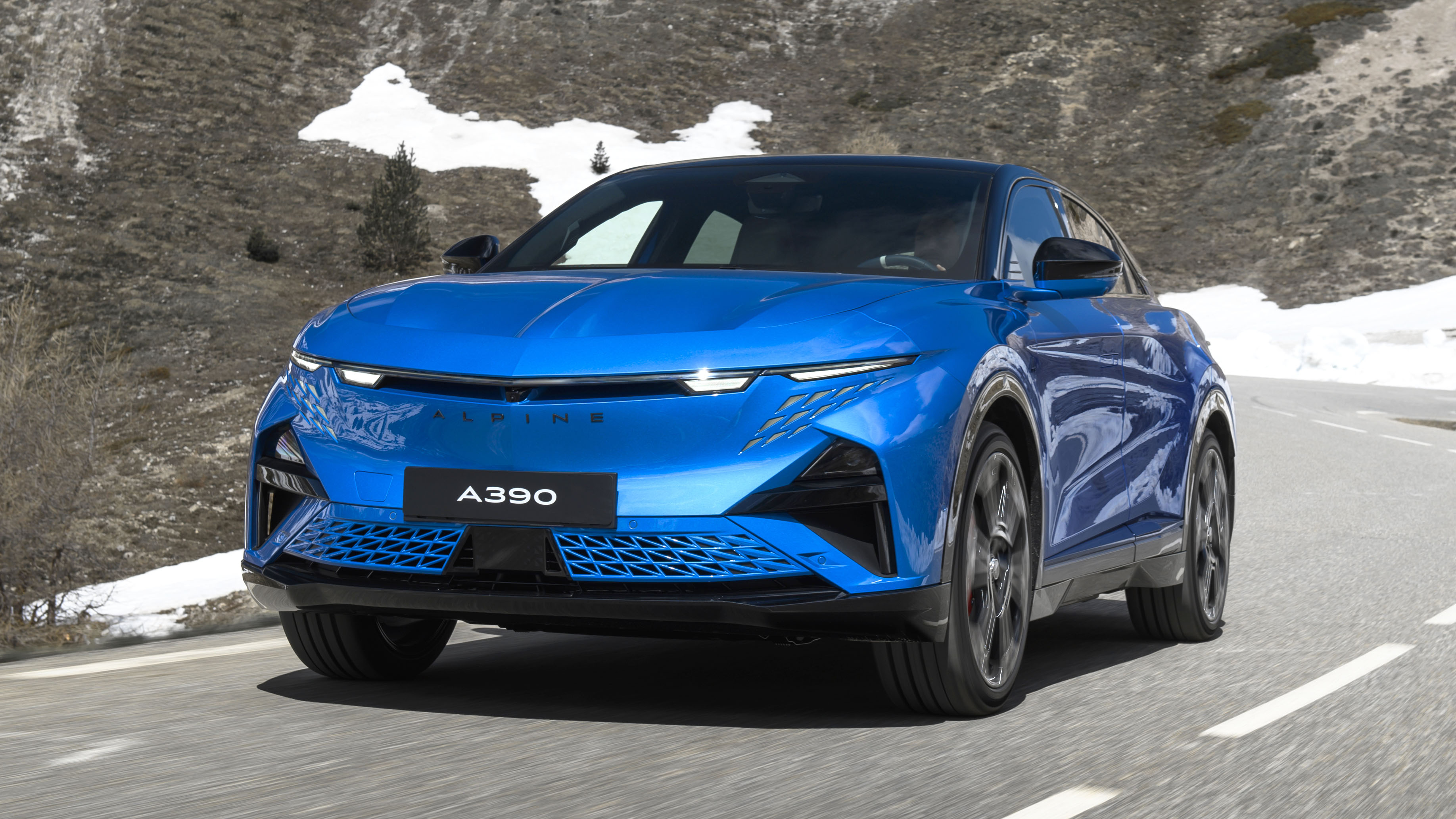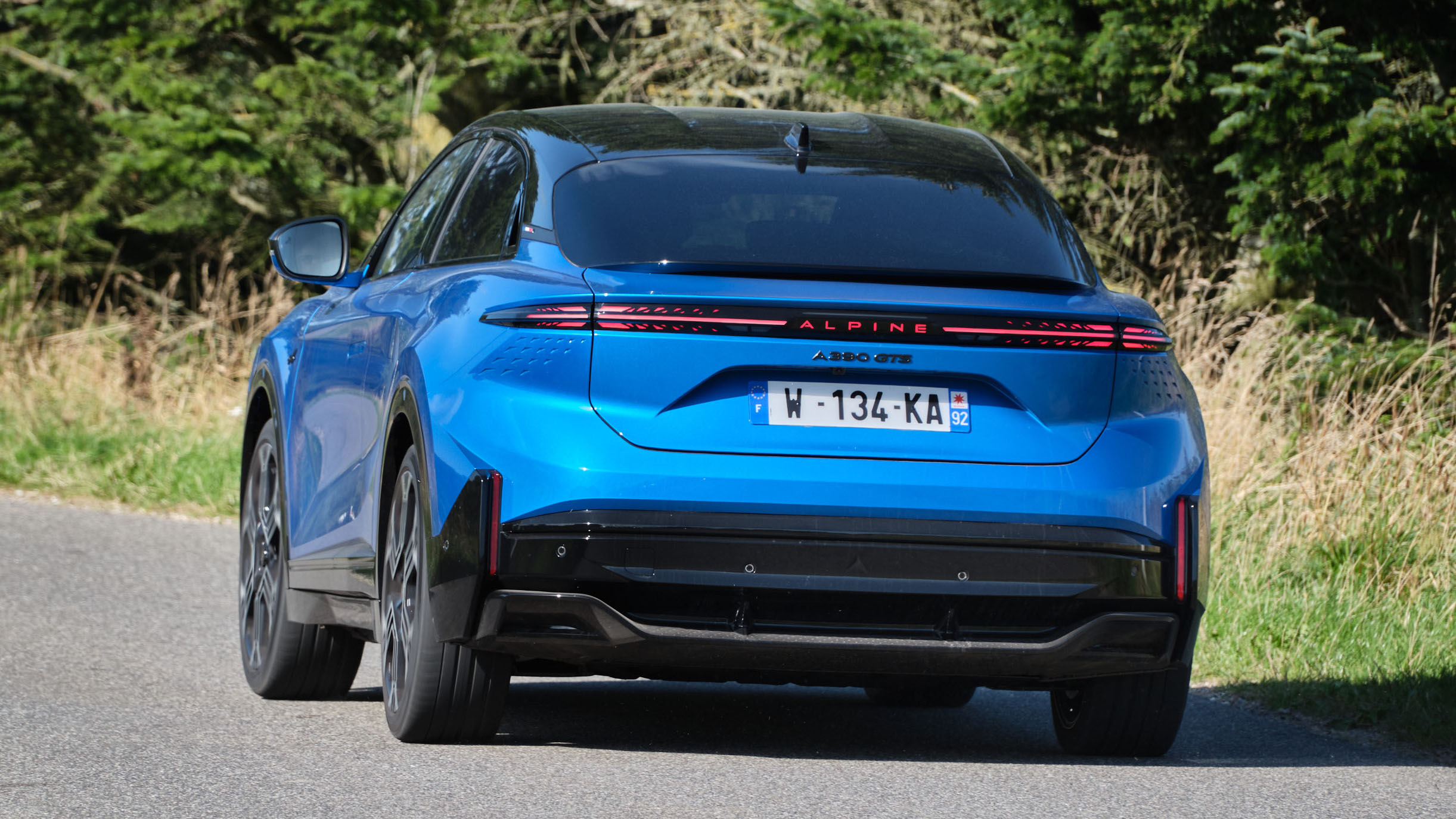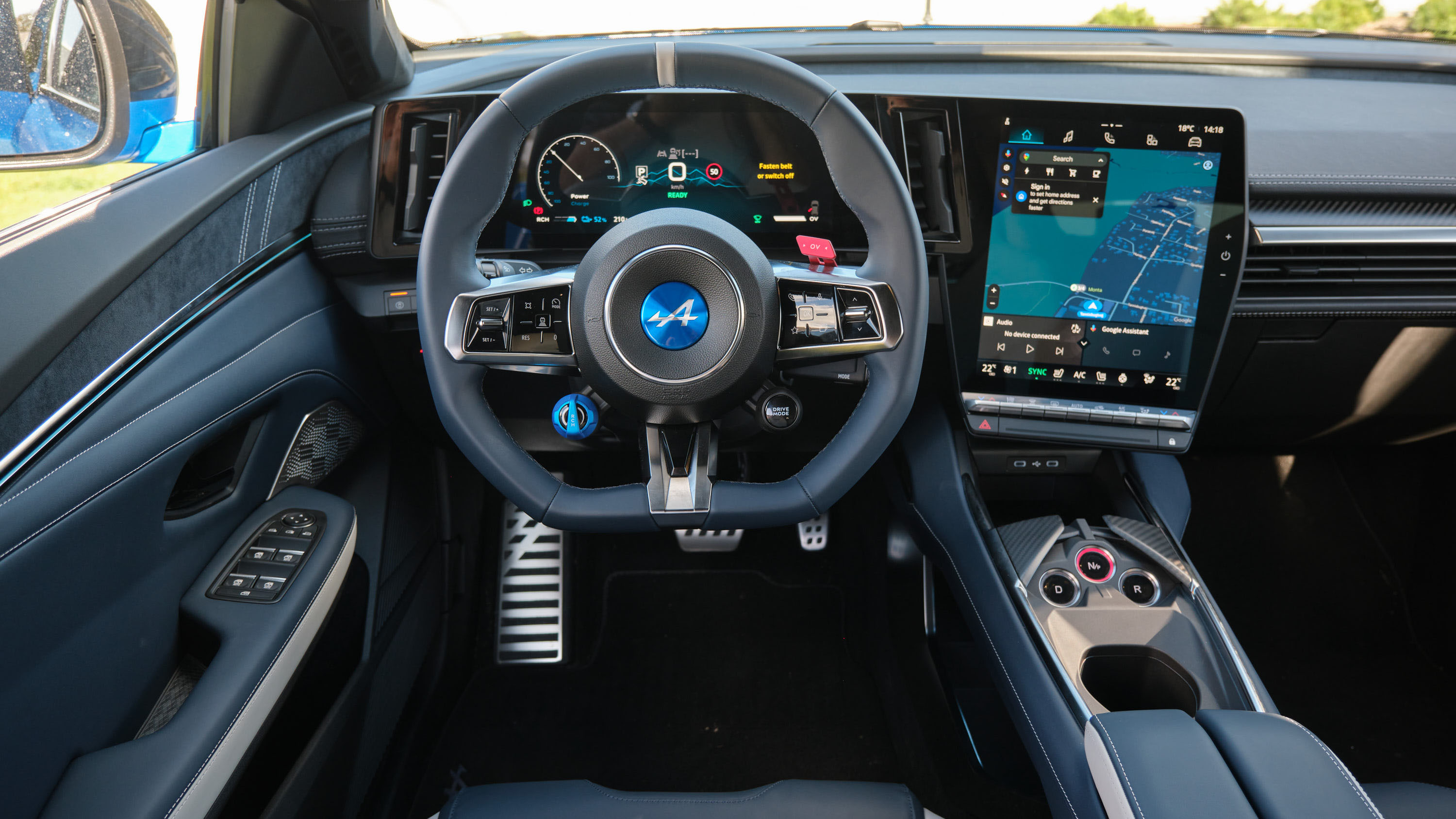
Alpine A390 review
Driving
What is it like to drive?
The A390's compact wheelbase makes it feel quick on its feet, especially as the steering is a direct ratio. It doesn't have four wheel steering and doesn't need it. Nor does it have active anti-roll or even adaptive dampers. Again, we never missed them.
The car feels pure, and you don't waste time playing with endless settings. It's not one of those cars where you feel under the cosh of FOMO, always buried in the configuration menus looking for the perfect setup for the lovely road that's just ending.
Even though the steering is quick and light, it doesn't feel nervous. You pour it through a series of bends and it feels fluid and lithe. It's not actually light, mind, at nearly 2.2 tonnes, but it disguises it. The ride is really quite amazing, an echo of the A110, making beautiful use of its spring travel. The chassis is generally quiet too. So overall comfort is very good and you can tackle difficult surfaces without worrying about crashing around. It really covers the ground on B-roads.
Although configuration options are few, there is the sport mode, which uses the torque vectoring to emphasise quick turning and very slight oversteer. You can feel the A390 working with you, balancing the four contact patches. The steering is more transparent than most, too. On the GTS's Michelin Pilot Sport 4S tyres, there's so much grip and traction you won't be sliding it, at least not in the dry.
How strong is the going and stopping?
Pedal efforts are all fairly light, so with all this power it can be hard to be smooth. A stronger spring on the accelerator would do no harm. Fortunately the pedal is pretty progressive even in the most aggressive modes.
In the GTS, performance at B-road speeds is very strong rather than wicked. Mind you, 0-62 in 3.9 seconds eh… the electric era is dulling our internal g-meter. Maybe at times you're using all of it, but that's not a reflection of a shortage of power, more that the chassis is just so composed. On a track, you really can see 100mph in no time at all. Low aero drag shows itself there.
A selectable artificial sound in the cabin really does help gauge your speed and power, rising and falling in pitch, tone and volume. Actually it's not wholly artificial, as it mixes in some real sounds of motors and inverter hum.
The steering wheel carries a big red OV (for overtake) button, a slightly pointless nod to motorsport. That gets max acceleration, plus a wooshy animation on the driver's screen, which you won't be watching at that moment. It just gives you performance you can get by another means: mashing your foot. Ecraser le champignon, as the French say. Crush the mushroom. One other thing though, it's also for launch control. In sport mode, press both pedals and OV, then release the brake. Bye.
The blue rotary control on the steering wheel selects regeneration level. It demands a slightly awkward hand movement. We'd prefer paddles. Anyway the high regen levels have a slight lag when you lift the accelerator, so we just used the brake pedal. It's no less efficient. And the brake is nicely progressive, blending regeneration and friction pretty seamlessly.
Using the power and the brakes on interesting roads got us 2m/kWh in the GTS. That's probably worst case, and means 180 miles range. We'd expect 240 miles on UK motorways, more in mixed traffic, more again in the GT version.
It's always worth sticking the destination into the satnav of Renault Group EVs: their software takes into account likely speeds and elevation changes on the upcoming route to give a very accurate range prediction. If it won't get you there, it plans best charge points too.
Featured

Trending this week
- Car Review
Renault Clio
- Car Review
Hyundai Kona






